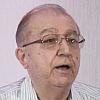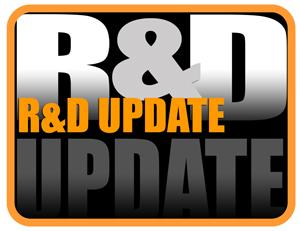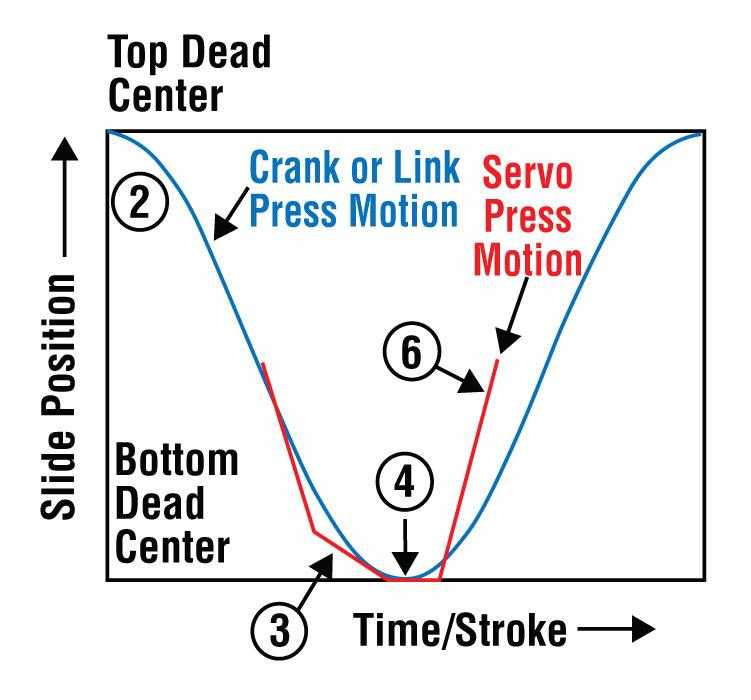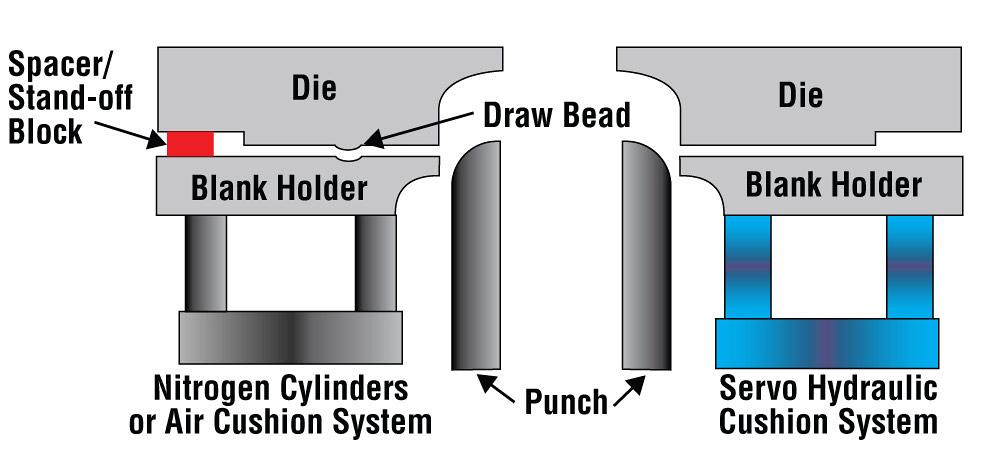Graduate Research Associate - Center for Precision Forming
- FMA
- The Fabricator
- FABTECH
- Canadian Metalworking
Categories
- Additive Manufacturing
- Aluminum Welding
- Arc Welding
- Assembly and Joining
- Automation and Robotics
- Bending and Forming
- Consumables
- Cutting and Weld Prep
- Electric Vehicles
- En Español
- Finishing
- Hydroforming
- Laser Cutting
- Laser Welding
- Machining
- Manufacturing Software
- Materials Handling
- Metals/Materials
- Oxyfuel Cutting
- Plasma Cutting
- Power Tools
- Punching and Other Holemaking
- Roll Forming
- Safety
- Sawing
- Shearing
- Shop Management
- Testing and Measuring
- Tube and Pipe Fabrication
- Tube and Pipe Production
- Waterjet Cutting
Industry Directory
Webcasts
Podcasts
FAB 40
Advertise
Subscribe
Account Login
Search
R&D Update: The effects of servo press motion and servo cushions on stamping results
- By Ali Fallahiarezoodar, David Diaz-Infante, Dr., and Taylan Altan, Ph.D.
- June 20, 2017
- Article
- Bending and Forming
New materials require new manufacturing methods. Deep drawing of advanced high-strength steel (AHSS) and certain aluminum alloys (such as 6XXX) requires flexible forming operations. Therefore, the use of servo presses and servo hydraulic cushions continues to increase.
Servo presses are used mainly because of their capability to increase production rate as compared to mechanical presses, through shorter cycle time (higher strokes per minute), availability of pendulum mode, and reduced stroke length. Figure 1 illustrates the major differences between the ram motion of a conventional mechanical press and a servo press.
A number of other useful characteristics make servo presses a good choice for forming operations:
- Variable stroke
- Optimum forming speed
- Dwell/slowdown in stroke before forming
- Attach/detach mode*Synchronization with automatic part transfer
- Energy savings
As discussed in this column in the May/June 2016 and March/April 2017 issues of STAMPING Journal®, controlling the material flow is critical to preventing splits or wrinkles in drawing operations. The force required to stretch the blank can be generated by draw beads and pneumatic (air or nitrogen) or hydraulic cushions.
The cushion force can be transmitted from the binder (or blank holder) to the blank in three different ways (see Figure 2):
- The cushion force is applied on the spacers during the forming process and affects the elastic deflection of the dies. Figure 3 illustrates the draw beads and spacers in a die where the blank holder force (BHF) is applied by nitrogen cylinders.
- Draw beads are used to restrict metal flow (stretching) on the blank in strategic zones.
- Servo control of the hydraulic cushion is used to apply constant or variable BHF (such as variation of cushion force versus ram stroke).
Spacers and draw beads have been used in the industry for a long time, mainly because they are relatively inexpensive and practical. Some companies have gone further and automated these technologies. One example is the “intelligent tool” developed by Audi to adjust the spacer height to an optimal value according to laser measurements of the flange motion during the drawing process.
Servo hydraulic cushions are assembled into the press, so usually there is no need to have nitrogen cylinders built into each die set. Servo presses and cushions can be used for:
- Attach/detach and restrike to increase draw depth and reduce springback (see Figure 4).
- Dwell at bottom dead center or during forming to reduce springback.
- Slow speed on touch to improve lubrication, reduce shock, and improve cushion response.
- Pulsation of servo cushion to reduce friction at flange and increase draw depth.
- Variable BHF during stroke to eliminate draw beads, increase dent resistance, and reduce springback.
- Variable BHF between successive strokes to compensate for variations in material or lubrication.
The Center for Precision Forming (CPF) at The Ohio State University, in cooperation with AIDA-America, Batesville Tool & Die, IRMCO, Hyson, and Shiloh Industries, is investigating the applications of servo presses and servo cushions. One option being explored is the feasibility of replacing the spacers and draw beads with servo cushions (see Figure 2), especially when using multipoint cushions. This mode of operation might save material and can allow the use of the servo press characteristics listed previously.
The results of some of these preliminary tests without spacers are shown in Figures 5 and 6.
Effect of Press Speed
Better results (no fracture) have been observed when forming parts at a higher ram speed while keeping all other parameters—cushion force, draw depth, lubricant—constant (see Figure 5a). However, researchers are still investigating the reasons for these improvements.
Effect of Attach/Detach Method
When constant ram motion is used and the part fractures, the attach/detach method has been an effective remedy in some cases (see Figures 4 and 5b).
In this method, the ram motion is reversed during the forming portion of the stroke to a point that the binder detaches from the die. Later, the ram motion is reversed to form the part (attach).
Effect of Pulsating Cushion Force
Some of the latest servo cushion models have the capability to pulsate, and vibrations in the flange are known to improve lubrication conditions in certain cases.
Researchers conducted experiments to prove this principle, and in some cases, results showed improved drawability (see Figure 6).
Effect of Variable Cushion Force
Variable cushion force replicates forming with spacers by increasing the BHF toward the end of the forming operation. Increasing the BHF near the end of the stroke helps to stretch the material and reduce springback.
References
T. Nakano, “Press machine trends and servo press forming examples,”
Steel Research International, Vol. 81, No. 9 (2010), pp. 682-685.A. Yadav et al, “Multipoint-control die cushion systems for stamping complex parts - Part III,”
STAMPING Journal, November 2006, pp. 36-37.About the Authors
Ali Fallahiarezoodar
David Diaz-Infante, Dr.
Servo Press Scientist
250 W 5th St.
Minster, OH 45865
o 419 628 2331, d 419 501 1890, m 419 733 7971

Taylan Altan, Ph.D.
Professor Emeritus and Director - Center for Precision Forming
subscribe now

The Fabricator is North America's leading magazine for the metal forming and fabricating industry. The magazine delivers the news, technical articles, and case histories that enable fabricators to do their jobs more efficiently. The Fabricator has served the industry since 1970.
start your free subscription- Stay connected from anywhere

Easily access valuable industry resources now with full access to the digital edition of The Fabricator.

Easily access valuable industry resources now with full access to the digital edition of The Welder.

Easily access valuable industry resources now with full access to the digital edition of The Tube and Pipe Journal.
- Podcasting
- Podcast:
- The Fabricator Podcast
- Published:
- 04/16/2024
- Running Time:
- 63:29
In this episode of The Fabricator Podcast, Caleb Chamberlain, co-founder and CEO of OSH Cut, discusses his company’s...
- Trending Articles
Capturing, recording equipment inspection data for FMEA

Tips for creating sheet metal tubes with perforations

Are two heads better than one in fiber laser cutting?

Supporting the metal fabricating industry through FMA

Omco Solar opens second Alabama manufacturing facility

- Industry Events
16th Annual Safety Conference
- April 30 - May 1, 2024
- Elgin,
Pipe and Tube Conference
- May 21 - 22, 2024
- Omaha, NE
World-Class Roll Forming Workshop
- June 5 - 6, 2024
- Louisville, KY
Advanced Laser Application Workshop
- June 25 - 27, 2024
- Novi, MI





























